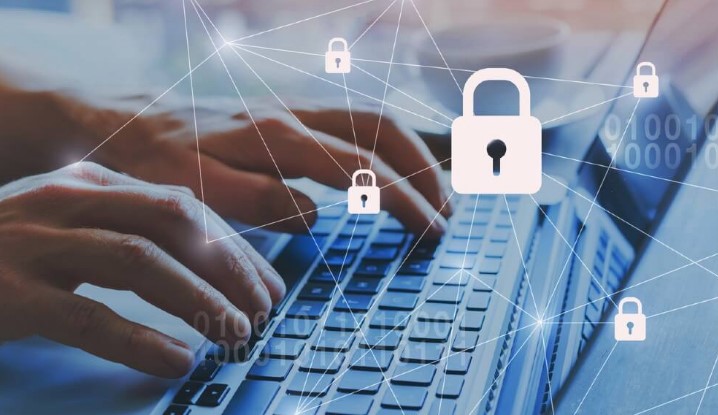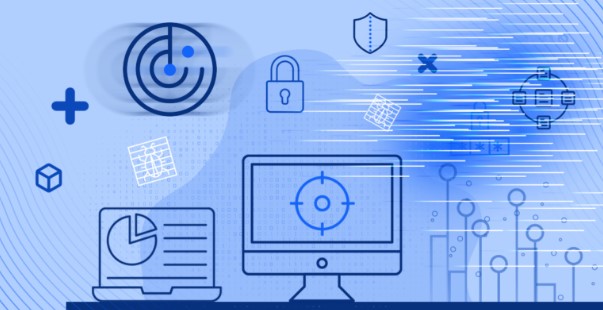Which One of These Does Not Pose a Risk to Security at a Government Facility
Government facilities represent the backbone of national operations. As such, they necessitate the highest level of security to ensure that sensitive data and operations are always safeguarded. In this high-stakes environment, every piece of the security puzzle is carefully selected and assessed, from access control systems to security personnel. But do all elements pose a potential risk? This article takes an in-depth look at the “Which One of These Does Not Pose a Risk to Security at a Government Facility”. Keep reading!
Essential Security Measures for Government Facilities

The security measures for government facilities usually include surveillance technology, intrusion detection systems, biometric authentication, and alarm systems. Combined, these technologies form a resilient defense against potential security breaches.
Threat Assessment and Security Risks

Threat assessment in a government facility context means identifying potential hazards and risks that might compromise the security. For instance, security protocols and cybersecurity measures are continually reviewed to keep up with evolving threats. It’s crucial to understand that not every component in this expansive landscape poses a direct risk.
The Role of Surveillance Technology and Security Personnel

Surveillance technology and security personnel play integral roles in the comprehensive security framework of a government facility. While they are essential in the event of an incident, they do not inherently pose a risk. Instead, they serve to mitigate risks, ensuring the facility remains a stronghold against potential threats.
Biometric Authentication and Its Contribution

A key aspect of government facility security is biometric authentication. This technology allows for the verification of individuals based on unique physical or behavioral attributes, thus effectively controlling access to sensitive areas. As a security measure, biometric authentication does not pose a risk, rather it drastically reduces the chances of unauthorized access.
Visitor Management: A Potential Risk?
Visitor management involves regulating and monitoring visitor access to the facility. In many government facilities, visitor management systems have been implemented to track visitor activities and ensure that only authorized individuals are given access. While it has the potential to be a security loophole, with strict protocols and guidelines in place, it often does not pose a risk to security.
Addressing Common Security Concerns
Despite the array of security measures, concerns may arise. However, remember, the purpose of these measures is not to pose risks but to alleviate them. These concerns are often addressed through regular audits, protocol updates, and continuous personnel training.
Alarm Systems and Cybersecurity Measures
Alarm systems and cybersecurity measures are essential to the overall security framework. While they are vital components of the security ecosystem, they do not inherently pose risks. Instead, they function to detect and deter potential threats.
A Deeper Dive into Non-threatening Factors in Government Facility Security
Security Training and Security Awareness
Training and awareness form a critical backbone of government facility security. Regular workshops, training sessions, and awareness campaigns ensure that all personnel are equipped with the necessary knowledge and skills to maintain security protocols.
The personnel are trained to respond to security incidents and maintain the highest levels of security. Awareness campaigns aim to keep everyone in the facility informed about potential threats and precautions. While these measures are paramount for security, they do not pose a risk; instead, they serve as risk mitigators.
Physical Security Measures and Their Role
Physical security measures, such as perimeter fencing, reinforced doors, and secure locks, are essential in any government facility. They create the first line of defense against unauthorized access and potential security breaches.
Despite their significance in the security landscape, these measures do not pose a risk to security at a government facility. On the contrary, they protect the facility from potential external threats.
Role of Security Policies
Security policies are a set of rules and procedures designed to protect a facility from threats. These policies cover various aspects, such as access control, information handling, and incident response. They provide a comprehensive guide to what is acceptable and unacceptable behavior in the facility.
Although these policies are vital for maintaining security, they do not pose a risk. They form the foundation of a secure environment, providing a clear pathway for actions and responses in various scenarios.
Cybersecurity Measures: A Risk or a Shield?
In the digital age, cybersecurity measures are crucial. They protect the facility’s sensitive data from cyber threats like hacking, malware, and phishing attacks. Measures like firewalls, antivirus software, and encryption are commonly used to protect against these threats.
While they deal directly with potential risks, cybersecurity measures themselves do not pose a risk. They are protective shields, ensuring that the facility’s digital assets are safe and secure.
Another Non-Threatening Factor: Office Layout and Design
The physical layout and design of a government facility are often overlooked when discussing security. However, they play a crucial role in facilitating efficient evacuation during emergencies and minimizing the risk of internal threats.
Despite being a part of the overall security considerations, office layout and design do not pose a risk to government facility security. Instead, a well-designed office layout can enhance the effectiveness of other security measures and provide a safer environment for all.
FAQs About Which One of These Does Not Pose a Risk to Security at a Government Facility
Q: What are the qualifications and responsibilities of security personnel in government facilities?
A: Security personnel at government facilities usually have to undergo extensive training and have a thorough understanding of security protocols. Their responsibilities include maintaining the security of the facility, responding to security breaches, and ensuring the safety of staff and visitors.
Q: What steps can be taken to prevent security breaches in government facilities?
A: Regular security audits, updating security protocols, continuous personnel training, and maintaining cutting-edge technology can help prevent security breaches.
Q: What are the challenges and advancements in ensuring the security of government facilities?
A: Some of the challenges include staying ahead of evolving threats, managing high-security clearance levels, and handling sensitive data. However, advancements like biometric authentication and artificial intelligence have enhanced security measures.
Q: How can security policies be effectively communicated and enforced in government facilities?
A: Regular training sessions, transparent communication, and strict enforcement of consequences for violation of security policies can ensure effective implementation.
Q: What role do security clearances play in government facilities?
A: Security clearances determine the level of access an individual has within a government facility. While it’s a vital aspect of facility security, the clearance system itself does not pose a risk. Instead, it helps manage and control access to sensitive areas, reducing the potential for unauthorized access.
Q: What is the importance of regular security audits in a government facility?
A: Regular security audits help identify potential vulnerabilities and assess the effectiveness of current security measures. These audits do not pose a risk; they are crucial for maintaining high security standards and ensuring all measures are functioning as intended.
Q: How does visitor management contribute to government facility security?
A: Visitor management systems regulate and track visitor access, reducing the risk of unauthorized access. Although the system deals with potential risks, it doesn’t pose a risk in itself.
Also Read: Hoka Women’s Shoes Clearance (Tips & Tricks)
Conclusion: Identifying the Non-Threat
Reflecting on the various elements that make up the security of a government facility, one stands out as a non-threat: the presence of greenery and plants within the facility. While not usually categorized alongside traditional security measures, the presence of greenery can contribute to a positive and productive environment without posing any inherent security risks. Hope so this guide about “Which One of These Does Not Pose a Risk to Security at a Government Facility” prove much beneficial for you. Stay vigilant, stay informed, and stay secure.



![How Much is iPhone XR in Nigeria? [Latest prices, 2024] 14 How Much is iPhone XR in Nigeria](https://deeplores.com/wp-content/uploads/2023/08/How-Much-is-iPhone-XR-in-Nigeria-768x432.png)



